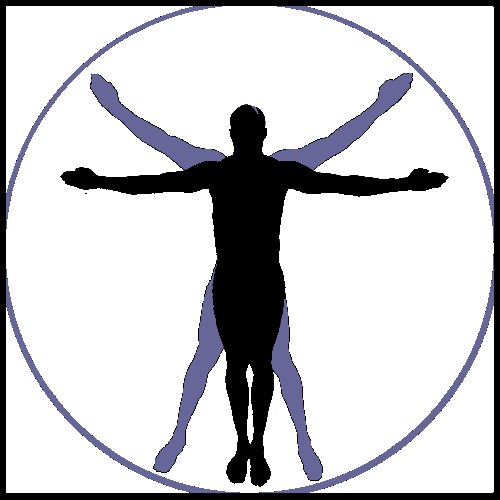I do not like green eggs and ham. I do not like them, Uncle-Sam.
Proteins – The essential nutrients, but how essential? I mean how much do we need daily, can we put an actual number on it? Proteins are the essential building blocks for the human body and according to Health Canada:
The following is a list of Health Canada’s recommended intakes:
- Have meat alternatives such as beans, lentils and tofu often
- Eat at least two Food Guide Servings of fish each week (such as char, herring, mackerel, salmon, sardines and trout).
- Select lean meat and alternatives prepared with little or no added fat or salt.
- Trim the visible fat from meats. Remove the skin on Poultry.
- Use cooking methods such as roasting, baking or poaching that require little or no added fat.
- If you eat luncheon meats, sausages or prepackaged meats, choose those lower in salt (sodium) and fat (Meat and Alternatives).
So proteins and fat are good…got it and this particular post isn’t focussing on the importance of fat, were still journeying on the protein side of the house. Health Canada’s (“How Many”) recommendation of a daily serving is dependent on age and gender (I think factors of height and BMI (Body mass index) are missing here, although BMI (can be inaccurate for fit people). So for a person of my age and gender, I should be eating 3 servings of protein a day. But what exactly is a serving? According to this chart posted on Health Canada’s website (“What is a Food”):
So now I have a basic idea of what I need to get my proper daily intake, but how much protein do I actually need on a daily basis? According to Uncle Sam and his Centres for Disease Control and Prevention (“How much Protein”) states:
| Recommended Dietary Allowance for Protein | |
|---|---|
| Grams of protein needed each day |
|
| Children ages 1 – 3 | 13 |
| Children ages 4 – 8 | 19 |
| Children ages 9 – 13 | 34 |
| Girls ages 14 – 18 | 46 |
| Boys ages 14 – 18 | 52 |
| Women ages 19 – 70+ | 46 |
| Men ages 19 – 70+ | 56 |
To sum up what we have learnt so far is that Health Canada and Uncle Sam both agree that protein is needed to prevent disease. Health Canada says at my age, I should be eating 3 portions and Uncle Sam says 56 grams. Well now I’m getting closer to an absolute number, but it’s still too general. We shouldn’t neglect other factors that should play a role in one’s daily protein intake, such as height factor or if one’s an active or sedentary type.
The current Recommended Dietary Allowance (RDA) is 0.8 grams of protein per kilogram of weight, however this article from The American Journal of Clinical Nutrition (Gersovitz) shows from its study that this is inadequate for elderly men and women. The Estimated Average Requirement (“Dietary Reference”) is also 0.8 grams of protein per kilogram of weight, understanding that if your Protein intake (“Reference”) is lower than 0.8 grams per kilogram of weight, than you are increasing your risk of disease and other health parameters. Since Health Canada total protein recommendation of 56 grams per day are determined from the amount needed per kg body weight multiplied by the reference weight, I should be weighing only 70 kg or 154 lbs. Well at my height of 6’1″, this would definitely put me underweight. My present weight is 175 lbs which is still a little lighter than the average, however my body fat-to-weight ratio is lower than average. So at 175 lbs I should be intaking an average of 64 grams of protein daily. However because I’m achieving fitness by ‘constantly varied high intensity functional movements‘ (Glassmen) a CrossFit definition, I should up my intake of protein to double the recommendation as per Healthline’s prescription (Benardot). So at my present weight I should be intaking approximately 128 grams of protein daily, according to my weight and lifestyle for maximum recovery. As a side note according to WebMD (Chang), if your goal is to lose weight, your protein intake should be around 35% of your dietary intake.
Caution: if you have kidney problems, high protein could be a problem.
According to the Harvard School of Public Health – “For people in good health, consuming 20 to 25 percent of calories from protein won’t harm the kidneys. For people with diabetes or early-stage kidney disease, however, the American Diabetes Association recommends limiting protein intake to 0.8 to 1.0 gram of protein per kilogram of body weight (roughly 10 percent of energy intake), since this may help improve kidney function; in later stage kidney disease, sticking to the 0.8 grams per kilogram minimum is advisable. Consult a doctor or a registered dietitian for individualized protein recommendations.” (How much).
I have no doubt that a higher protein intake will drop your weight, as anybody who knows me I’ve always been lean with an active regime. But since I started following a primal lifestyle as of mid-January, I’ve lost 10 lbs. Not sure where it was trimmed of off, but it’s gone and I’m still as strong as ever. My final piece to the puzzle is what should my weight be at my height? Again there are many factors that can come into play here, but lets keep this factor down to simplicity and find some sort of standard. Using the Health Canada BMI Chart (“Body Mass Index”), my BMI calculates out to 23 kg/m2, leaving me in a healthy height-to-weight ratio. So for my size as a very active adult the end result is I should be intaking 128 grams of protein daily. At the website indoorclimbing.com (“Daily Protein”) they have a quick calculator of what your daily protein intake range should be according to your height. When I input my height into the calculator, its recommendation is that I should be 184 lbs in weight and intaking between 38.7 to 67 grams of protein daily, pretty much inline with Health Canada.
In conclusion, in order to keep from having any nutritional deficiencies which can result in stunting of growth, impaired immunity, skin disorders, learning disabilities and anorexia; with our basic calculations I should be consuming up to 128 grams of protein for optimal performance. So according to Uncle Sam (USDA Nutrient Data Laboratory), for me to get 128 grams of protein a day:
- 2 slices Ham, extra lean of approximately 57 grams gives an average of 9.80 grams of protein. So for my daily intake, I would need to eat twenty-six slices of ham to get my required daily intake.
- 1 Egg, whole, cooked, scrambled gives an average of 6.76 grams of protein. So for my daily intake, I would need to eat eighteen whole eggs to get my required daily intake. So I guess what I’m saying is…
I do so like green eggs and ham!
Thank you!
Thank you,
Uncle-Sam
Works Cited:
Benardot, Dan., PhD, RD, FACSM. Advanced Sports Nutrition: 27-. Human Kinetics. Healthline.com. 10 Mar. 2012<http://www.healthline.com/hlbook/nut-protein-requirements>.
Centers for Disease Control and Prevention. Nutrition for Everyone. How much protein do I need? 31 Oct 2011. 10 Mar 2012 <http://www.cdc.gov/nutrition/everyone/basics/protein.html>.
Chang, Louise. M.D. High-Protein Diet for Weight Loss. WebMD. 07 Jan 2010. 10 Mar 2012 <http://www.webmd.com/diet/guide/high-protein-diet-weight-loss>.
“Daily Protein Requirements and Protein Intake.” Indoorclimbing.com. 10 Mar 2012 <http://www.indoorclimbing.com/Protein_Requirement.html>.
Glassmen, Greg. “CrossFit’s New Three-Dimentsional Definition of Fitness and Health – 1” CrossFit Journal 1 (21 Feb. 2009): 9 Pars. 10 Mar 2012<http://journal.crossfit.com/2009/02/crossfits-new-definition-of-fitness-volume-under-the-curve-1.tpl>
Gersovitz, M., Motil, K. et al. “Human protein requirements: assessment of the adequacy of the current Recommended Dietary Allowance for dietary protein in elderly men and women.” The American Journal of Clinical Nutrition 35.6-14 (Jan. 1982): 1 pars. 10 Mar. 2012 <http://www.ajcn.org/content/35/1/6>.
Health Canada. Food and Nutrition. Body Mass Index (BMI) Nomogram. 23 Feb. 2012. 10 Mar 2012. <http://www.hc-sc.gc.ca/fn-an/nutrition/weights-poids/guide-ld-adult/bmi_chart_java-graph_imc_java-eng.php>.
—. Dietary Reference Intakes Tables. 29 Nov. 2010. 10 Mar. 2012 <http://www.hc-sc.gc.ca/fn-an/nutrition/reference/table/index-eng.php>.
—. How Many Food Guide Servings of Meat and Alternatives Do I Need? 14 Jan. 2008. 10 Mar. 2012 <http://www.hc-sc.gc.ca/fn-an/food-guide-aliment/choose-choix/meat-viande/serving-portion-eng.php>.
—.Meat and Alternatives. 14 Jan. 2008. 10 Mar. 2012 <http://www.hc-sc.gc.ca/fn-an/food-guide-aliment/choose-choix/meat-viande/index-eng.php>.
—. Protein Research. 01 Feb. 2000. 10 Mar. 2012 <http://www.hc-sc.gc.ca/fn-an/res-rech/res-prog/nutri/macro/protein_research-recherche_sur_les_proteines-eng.php>.
—. Reference Values for Macronutrients. 23 Jan. 2006. 10 Mar. 2012 <http://www.hc-sc.gc.ca/fn-an/nutrition/reference/table/ref_macronutr_tbl-eng.php>.
—. What is a Food Guide Serving of Meat and Alternatives? 14 Jan. 2008. 10 Mar. 2012 <http://www.hc-sc.gc.ca/fn-an/food-guide-aliment/choose-choix/meat-viande/serving-portion-eng.php>.
How much Protein do I need each day? Harvard School of Public Health. 10 Mar 2012. <http://www.hsph.harvard.edu/nutritionsource/questions/protein-questions/index.html#howmuch>.
USDA Nutrient Data Laboratory. USDA National Nutrient Database for Standard Reference, Release 18. Nutrient Lists. 2002. 10 Mar 2012 <http://www.nal.usda.gov/fnic/foodcomp/Data/SR18/nutrlist/sr18list.html>.
Wikipedia. Body mass index. 11 Mar. 2012. 11 Mar 2012 <http://en.wikipedia.org/wiki/Body_mass_index>.


Leave a Reply